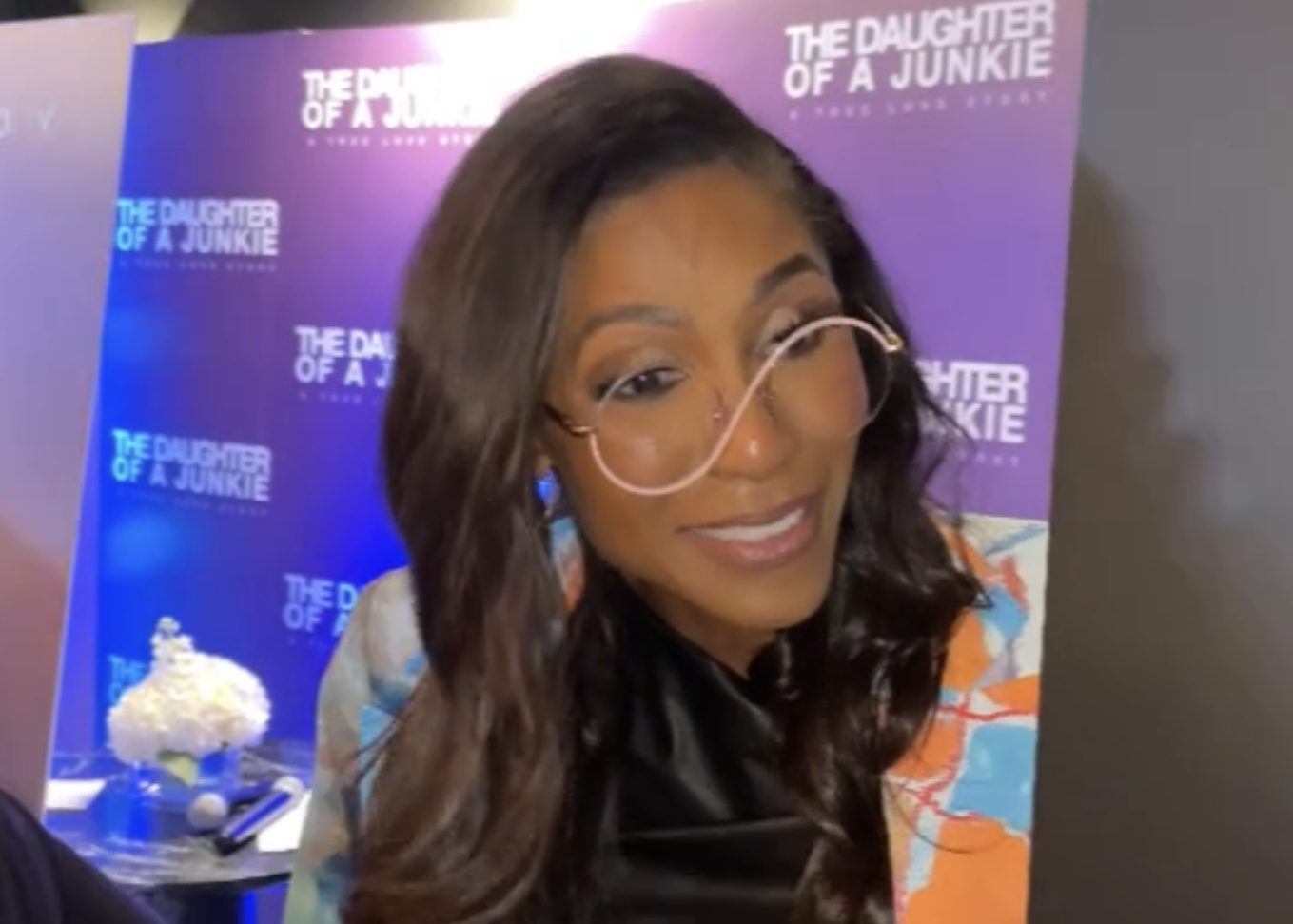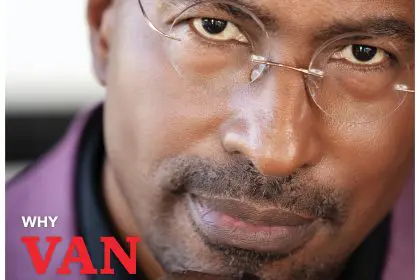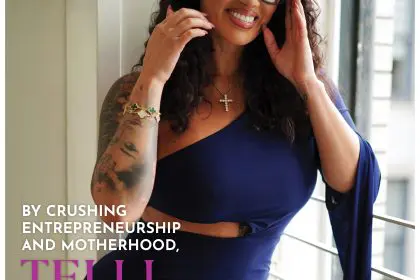
Words by Yvette Caitslin, DeWayne Rogers
and Todd Williams
Cover Image by Todd Williams for Steed Media Service
Story Images by Hiltron Bailey for Steed Media Service
From the Schlobaum Projects in Yonkers, N.Y., came the unlikely heroine of Gen X urban femininity. Mary J. Blige was an original from the very beginning. With her gritty, pained voice, her tough-as-nails demeanor, and a wardrobe of Yankee jerseys, skullcaps and combat boots; she was the most ‘gangsta’ female superstar since Cleopatra Jones. Her appeal was in her unrehearsed honesty, both on wax and in person. After 10 years of smiling pop divas, from Mariah Carey to Janet Jackson, MJB didn’t give a damn about being America’s sweetheart, she was the Queen of Hip-Hop Soul – the ‘anti-Whitney’ – and the ‘hood loved her for it.
It didn’t take long for the world to figure out that Blige was fighting her own demons; drug-addiction, a troubled childhood, and a handful of high-profile failed relationships all contributed to her seemingly unending parade of drama. But, they also informed her music with such honesty and hurt that she seemed to reach deep down inside herself and, through that wonderfully flawed voice, find an artistry that spoke for an entire generation.
What’s the 411?/MCA/July 28, 1992
A blockbuster album in almost every sense of the word, the record that announced Mary J. Blige to the world was effortlessly street and sexy. Released in the summer of 1992 just months after the L.A. riots and with the hip-hop revolution gaining momentum seemingly by the minute, Blige appeared as the first ” ’round-the-way girl” soul diva. The high-school dropout didn’t smile for the cameras, and the thumping rhythm of the Audio Two-inspired first single, “Real Love,” showcased a 23-year-old that wasn’t afraid to show the thugs some love. But, Blige had begun a tumultuous relationship with Jodeci’s K-Ci Hailey; and the pain from this stormy affair would be the fuel for her breakthrough as a songwriter – a sophomore album that would prove to be one of the most open and honest soul albums in recent history.
My Life/MCA/November 29, 1994
Reeling from romantic betrayals and battling cocaine addiction, Blige had become notorious for her ‘bad-girl’ behavior since her debut album made her a superstar. Her trademark ‘realness’ was threatening to derail everything she had worked for; she was showing up for interviews under the influence, belligerent or not showing up at all. An album that inspired countless, millennium-era wannabes, it was, and still is, the crowning achievement of Blige’s career; My Life also stands as a painful reminder for the artist herself of the harrowing mid-’90s. Despite her personal and professional pitfalls, she scored one of the biggest hits of her career a few months after the album’s release, a collaboration with Method Man called “I’ll Be There for You/You’re All I Need to Get By,” an update of the Marvin Gaye/Tammi Terrell classic “You’re All I Need to Get By.” But Blige was in desperate need of a change.
Share My World/MCA/April 22, 1997
Dissolving her partnership with Sean Combs, Blige recruited a stable of super-producers for her third album, including Rodney Jerkins, Babyface, and Jimmy Jam & Terry Lewis. Debuting at No. 1, Share My World was a turning point in Blige’s career. Beginning to mature past her early ‘thug-girl’ image, and having moved on from her turbulent relationship with K-Ci, Blige seemed scarred, but unbroken, and wiser after her long period of inner turmoil. The album’s more sunny, more sophisticated outlook and sleeker production caught some fans and critics off-guard, but Blige was in transition, from ’round-the-way-girl to urban goddess.
Mary/MCA/August 17, 1999
Continuing to grow and blossom as a person as the new millennium approached, Blige’s fourth studio album, simply titled Mary, saw the singer fully realized as a 21st century soul diva, capable of breathing life into the sounds of the past by injecting them with her own brand of gritty honesty. Only now, instead of heartache and turmoil, Blige was writing and singing about hope and love. Aretha Franklin, Eric Clapton, Lauryn Hill and Elton John (who would become one of Blige’s close, personal friends), all collaborated with her on the album; and Blige’s earthy, almost adult-contemporary approach was further proof that she wasn’t allowing herself to be boxed in by anyone anymore. Though not as commercially successful as previous efforts, critics praised the Queen of Hip-Hop Soul’s approach and continued evolution. – todd williams
No More Drama/MCA/Aug. 28, 2001
The release of No More Drama signaled a changing of the guard in Blige’s career. Even the casual observer could see that Blige had come a long way since her 1992 debut What’s the 411?. This fifth studio release signified Blige’s newfound understanding of what truly mattered in life for her: loving herself and having a positive relationship with God. Such a stance shifted Blige’s standing within the black community from “homegirl” to mentor. Blige was now a woman chock-full of wisdom, and unafraid to share the many lessons learned with her somewhat fanatical following. Blige had evolved. Blige was now a woman. And the grace and dignity with which she promoted this release exhibited her fearless realization that she was, indeed, a queen.
Love & Life/Geffen/Aug. 26, 2003
It was the summer of 2003, and like clockwork, Blige released a highly anticipated album. Aptly titled Love & Life, this sixth studio offering was perhaps the most underwhelming of Blige’s stellar career. Ironically, this was due to a newfound happiness that Blige had discovered in her personal life. While the rest of the world guiltily reveled in her personal pain, which would always be poignantly captured on wax, Blige was now a new woman – one that was foreign to her endless legions of fans. Add to that an unsuccessful reunion with Sean “Diddy” Combs, and Love & Life seemed to signal a hard fall from grace. With happiness in her personal life, what would Blige have to sing about now? No one wanted to listen to the happy Mary. And if there was no pain, there was no Mary. At least not the Mary everyone had come to adore. Blige needed to do some soul searching – and fast. – dewayne rogers
The Breakthrough/Geffen/Dec. 20, 2005
Her answer rang through loud and clear. As 2005 pulled into home stretch, musical pundits and casual Blige enthusiasts alike had all but written the songstress off as a has-been. A music anthology was in the works, and many considered Blige to no longer be a relevant contributor to music’s ever-evolving landscape. But Blige, never one to conform to society’s expectations, produced perhaps one of her greatest studio offerings ever. The Breakthrough was just that, the commercial breakthrough Blige so sorely needed. Steeped in the power, drama and intrigue that initially elevated her to prominence, Blige politely let the world know that despite her continued personal happiness, there was no need to eulogize her yet. She was still highly capable of continuing her reign as the Queen of Hip-Hop Soul. – dewayne rogers
The Blige-ologue
A music critic once implied that Mary J. Blige sings from the tender orchid that dwells between her thighs. Though, she lyrically paints a melancholy illustration of betrayal and the loss of innocence, her talent and sincerity are undeniable. Blige, a six-time Grammy Award-winning artist, isn’t afraid to confess her demons to win the hearts of fans. Accordingly, women feel they can trust her because they’ve experienced similar trials and tribulations and she’s an example of the success for which they yearn.
The Yonkers, N.Y.-bred, high school dropout grew up in Schlobohm Gardens housing project with her mom and sister. Owing much of her career’s initial success to an on-and-off relationship with Sean “Diddy” Combs, the husky-voiced diva shows us that forgiveness is an indispensable requisite to meeting your destiny. The pair’s studio reunion on Love & Life proves it. She’s been consistently winning awards, from American Music to NAACP Image, since the amnesty. To date, she’s won a total of 46.
All hail the queen! The Mary J. Blige sensation is a product of the union of the hip-hop and R&B genres. Simply, the love affair spawned a bi-genre offspring earning her the title – Queen of Hip-Hop Soul. Likened to the Queen of Soul Aretha Franklin who defined soul music, Blige is a heroine who dropped her streetwise, combat boot-wearing image to flaunt her tatted-up, svelte physique in the likes of Michael Kors. The red carpet habitué, often seen escorted by her amber-eyed arm candy, aka husband Kendu Isaacs, has earned R-E-S-P-E-C-T. Although she hasn’t garnered as many gilded gramophone statuettes (Franklin has 17 Grammys), Blige’s single “Be Without You” (The Breakthrough, 2005) had the longest stay at No. 1 on the Billboard Hot R&B/Hip Hop and Rap Chart at 15 weeks; and she’s the fastest selling female R&B artist with 727,163 copies in first-week sales.
Keyshia Cole is often compared to Blige and many fans would agree that she owes her fast trek up the ladder to her because, like the young Blige, Cole’s Oakland upbringing left her well acquainted with the streets. Cole’s brashness has created a trendy image that fits snugly in today’s pop culture. Thus, she fills the gap for that R&B B-girl that was lost when Blige moved to the next rung.
Fifteen years in the making, Blige is a multiplatinum-selling artist who consistently delivers tunes that thrill her fans. She’s paved the way for female artists to sing about the sheets and the streets without condemnation. – yvette caslin










